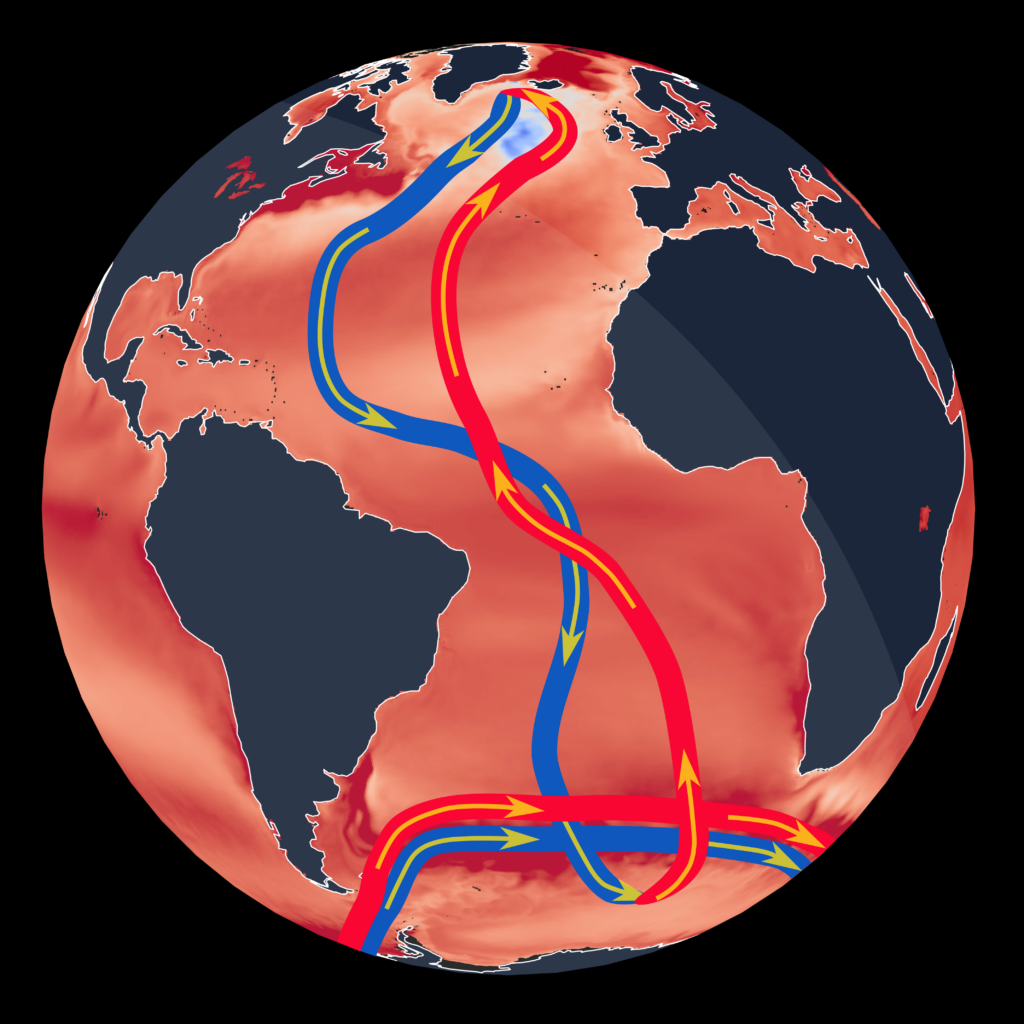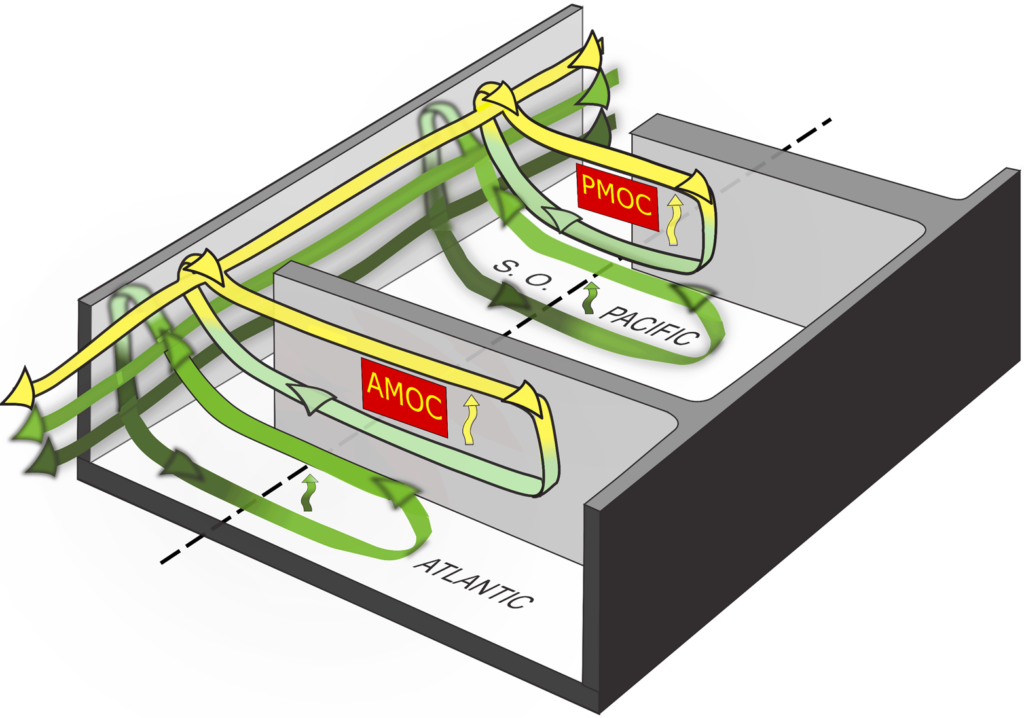A giant current moves warm water northward from the tropics – carrying enough heat energy every five days to power the world for a year – and sends cold, dense water south, steadying global weather patterns, influencing rainfall and keeping Europe’s climate relatively mild.
But there have been increasing concerns that this great ocean conveyor, which climate scientists called the Atlantic Meridional Overturning Circulation (AMOC), is weakening due to climate change. Some – notably 44 experts from 15 countries who signed a letter last year – fear a collapse could happen this century, pushing the global climate past a tipping point.
As greenhouse gas emissions rise, there are increases in rainfall and Greenland ice sheets melt, increasing the fresh water that pours into the Atlantic. The resulting disruption of AMOC would plunge Europe into extreme cold each winter, drying the Amazon rainforest, itself another tipping point, and jeopardise monsoons in Africa and Asia which underpin food production.

To investigate, Dr Jonathan Baker of the Met Office, with colleagues there and at the University of Exeter, used 34 models – computer simulations that were developed for the Intergovernmental Panel on Climate Change – to assess the AMOC’s response to extreme changes in greenhouse gas concentrations and North Atlantic freshwater levels.
Today, in the journal Nature, they conclude AMOC collapse is unlikely this century, thanks to newly-appreciated details of the global climate system.
‘Tipping points are critical thresholds that can lead to large and potentially irreversible climate changes,’ said Baker. ‘However, our research finds that the AMOC is not currently close to reaching a tipping point.’
The reason is due to the Southern Ocean around Antarctica, which experiences Earth’s strongest winds and largest waves, playing a critical role in the global climate system. ‘We find that strong winds over the Southern Ocean are likely to prevent an AMOC collapse this century,’ said Dr Baker.
Southern Ocean winds pull deep waters to the surface, acting like a ‘powerful pump’, helping to keep the AMOC turning over. However, the team also found that a lesser-known ocean conveyor—the Pacific Meridional Overturning Circulation (PMOC)— can further slow the AMOC but, fortunately, is itself too weak to trigger a complete collapse.
‘We found a new overturning circulation develops in the Pacific Ocean under extreme climate change scenarios,’ he said. ‘This was an unexpected finding, and more research is needed to understand its potential implications for global climate and marine ecosystems.’
Similar to the AMOC, this Pacific current sinks at the equator rather than at high latitudes, moving waters northward while returning deep waters southwards.

While the role of Southern Ocean winds is a relatively comforting finding, scientists warn that the AMOC is still weakening, and its decline could disrupt global climate patterns. ‘Our results also indicate that the AMOC is very likely to weaken, which brings its own major climate challenges,’ he said.
In short, the Southern Ocean may be buying us time but without aggressive action to reduce carbon emissions, the world is still heading toward uncharted waters. ‘Since an AMOC collapse has been linked to an Amazon rainforest dieback, our findings could have implications for this risk as well.’
Today’s study is in the spirit of James Lovelock’s Gaia hypothesis, which sees the Earth as a self-regulating system, and was put on a firm mathematical footing in research during the 1980s by Lovelock with Andrew Watson, one of the authors of today’s paper, using a computer model called Daisyworld.
That model shows that feedback processes can keep Daisyworld’s temperature stable (this is a result of negative feedback, like a thermostat in central heating, analogous to the role of Southern Ocean winds in today’s research), but that past a tipping point positive feedback can also push it into a new climate pattern (think of ‘howl round’ in a sound system). A few days ago, researchers concluded that even Daisyworld, which is highly idealised, is at risk of tipping points, reinforcing concerns about real-world climate vulnerability.